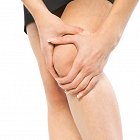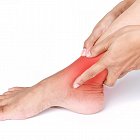
Pain is widely defined as an unpleasant sensory and emotional experience associated with actual or potential tissue damage, or described in terms of such damage by International Association for the Study of Pain. It is mostly regarded as a symptom of an underlying condition such as back pain and neck pain. There are many non-invasive non-drug pain management techniques available.
Pain rehabilitation management are significantly more cost effective than implantation, conservative care and even surgery. The combination of treatments including exercises that are capable of eliminating pain or significantly improve functional outcomes.
For example:
Exercise
Physical exertion helps to increase strength, flexibility, and restore normal motion. Specific strength training has high clinical relevance and leads to marked prolonged relied for chronic muscle pain which involve active, passive and resistive elements. Exercise is necessary for proper cardiovascular health, disc nutrition and musculoskeletal health.
Manual techniques
Manipulation of affected areas by applying force to the joints, muscles, and ligaments. Manual therapy shown significantly greater improvement than exercise therapy in those with chronic low back pain and neck pain. The effects are reflected on most outcome measures for short and long-term follow-up. Movement strategies help to improve scapulohumeral rhythm, mobility and functional ability for those with frozen shoulder syndrome.
Behavioral modification
The use of behavioral methods optimize patient responses to back pain and painful stimuli. It involves teaching one to alleviate the pain by practising mindfulness, relaxation techniques, coping techniques and other methods to return to full active normal life. Biofeedback involves learning to control muscle tension, blood pressure, and heart rate for symptomatic improvement.
Usage of modalities
These methods include cold packs and hot packs, ultrasound, diathermy and electrotherapy, which are usually used in conjunction with exercise. These modalities usually yield positive or neutral results based on the severity and intensity of pain. The most commonly known form of electrotherapy is transcutaneous electrical nerve stimulation (TENS). TENS therapy attempts to reduce back pain by means of a low-voltage electric stimulation that interacts with the sensory nervous system.






